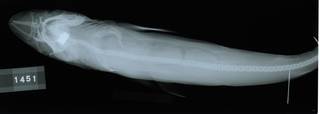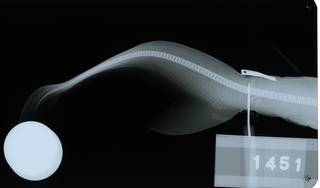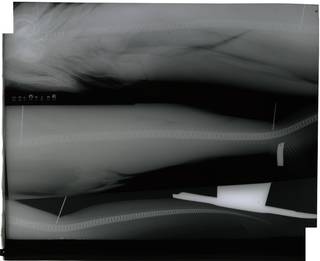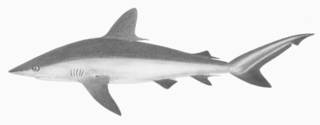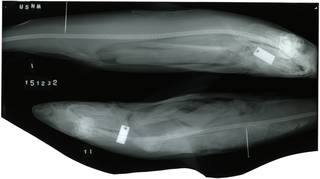WoRMS taxon details
Carcharhinus falciformis (Müller & Henle, 1839)
105789 (urn:lsid:marinespecies.org:taxname:105789)
accepted
Species
Aprionodon sitankaiensis Herre, 1934 · unaccepted
Carcharhinus atrodorsus Deng, Xiong & Zhan, 1981 · unaccepted
Carcharhinus falciformes (Bibron, 1839) · unaccepted (misspelling)
Carcharhinus floridianus Bigelow, Schroeder & Springer, 1943 · unaccepted (junior synonym)
Carcharhinus menisorrah (Valenciennes, 1839) · unaccepted (Synonym)
Carcharhinus menissorrah (Valenciennes, 1839) · unaccepted > misspelling - incorrect subsequent spelling
Carcharias (Prionodon) menisorrah Valenciennes in Müller & Henle, 1839 · unaccepted > junior subjective synonym
Carcharias falciformis Bibron, 1839 · unaccepted
Carcharias falcipinnis Lowe, 1839 · unaccepted
Carcharias menisorrah Valenciennes, 1839 · unaccepted
Carcharias pharaonis Ehrenberg, 1871 · unaccepted > nomen nudum
Carcharins menisorrah Valenciennes, 1839 · unaccepted (misspelling)
Carcharius falcipinnis Lowe, 1839 · unaccepted
Carcharius menisorrah Valenciennes, 1839 · unaccepted (misspelling)
Eulamia malpeloensis Fowler, 1944 · unaccepted
Eulamia menisorrah (Valenciennes, 1839) · unaccepted
Gymnorhinus pharaonis Hemprich & Ehrenberg, 1899 · unaccepted
Prionodon tiburo (Poey, 1860) · unaccepted
Squalus tiburo Poey, 1860 · unaccepted
marine, brackish, fresh, terrestrial
(of Carcharias falciformis Bibron, 1839) Müller, J.; Henle, F. G. J. (1838-1841). Systematische Beschreibung der Plagiostomen. <em>Veit und Comp., Berlin.</em> i-xxii + 1-200, 60 pls. [Pp. 1-28 published in 1838, reset pp. 27-28, 29-102 in 1839, i-xxii + 103-200 in 1841. Please note the different authors responsible for some species.]. [details]
Description Found abundantly near the edge of continental and insular shelves, but also in the open sea and occasionally inshore....
Distribution Circumtropical. Western Atlantic: Massachusetts, USA to southern Brazil, including the Gulf of Mexico and the Caribbean
Description Found abundantly near the edge of continental and insular shelves, but also in the open sea and occasionally inshore. Recorded temperatures where it occurs range from 23-24°C. It is quick-moving and aggressive. Associated with schools of tuna. Primarily feeds on fishes, but also cephalopods, and even crabs. Used in many ways with its meat eaten fresh and dried-salted; its hide for leather; its fin for shark-fin soup; its liver oil as a rich source of vitamin A. [details]
Distribution Circumtropical. Western Atlantic: Massachusetts, USA to southern Brazil, including the Gulf of Mexico and the Caribbean
Distribution Circumtropical. Western Atlantic: Massachusetts, USA to southern Brazil, including the Gulf of Mexico and the Caribbean [details]
Froese, R. and D. Pauly. Editors. (2025). FishBase. Carcharhinus falciformis (Müller & Henle, 1839). Accessed through: World Register of Marine Species at: https://www.marinespecies.org/aphia.php?p=taxdetails&id=105789 on 2025-12-16
Date
action
by
![]() The webpage text is licensed under a Creative Commons
Attribution-Noncommercial 4.0 License
The webpage text is licensed under a Creative Commons
Attribution-Noncommercial 4.0 License
Nomenclature
original description
(of Carcharias falciformis Bibron, 1839) Müller, J.; Henle, F. G. J. (1838-1841). Systematische Beschreibung der Plagiostomen. <em>Veit und Comp., Berlin.</em> i-xxii + 1-200, 60 pls. [Pp. 1-28 published in 1838, reset pp. 27-28, 29-102 in 1839, i-xxii + 103-200 in 1841. Please note the different authors responsible for some species.]. [details]
basis of record van der Land, J.; Costello, M.J.; Zavodnik, D.; Santos, R.S.; Porteiro, F.M.; Bailly, N.; Eschmeyer, W.N.; Froese, R. (2001). Pisces, <B><I>in</I></B>: Costello, M.J. <i>et al.</i> (Ed.) (2001). <i>European register of marine species: a check-list of the marine species in Europe and a bibliography of guides to their identification. Collection Patrimoines Naturels,</i> 50: pp. 357-374 (look up in IMIS) [details]
basis of record van der Land, J.; Costello, M.J.; Zavodnik, D.; Santos, R.S.; Porteiro, F.M.; Bailly, N.; Eschmeyer, W.N.; Froese, R. (2001). Pisces, <B><I>in</I></B>: Costello, M.J. <i>et al.</i> (Ed.) (2001). <i>European register of marine species: a check-list of the marine species in Europe and a bibliography of guides to their identification. Collection Patrimoines Naturels,</i> 50: pp. 357-374 (look up in IMIS) [details]
Ecology
ecology source
Looby, A.; Erbe, C.; Bravo, S.; Cox, K.; Davies, H. L.; Di Iorio, L.; Jézéquel, Y.; Juanes, F.; Martin, C. W.; Mooney, T. A.; Radford, C.; Reynolds, L. K.; Rice, A. N.; Riera, A.; Rountree, R.; Spriel, B.; Stanley, J.; Vela, S.; Parsons, M. J. G. (2023). Global inventory of species categorized by known underwater sonifery. <em>Scientific Data.</em> 10(1). (look up in IMIS), available online at https://doi.org/10.1038/s41597-023-02745-4 [details] 
Other
context source (Deepsea)
Intergovernmental Oceanographic Commission (IOC) of UNESCO. The Ocean Biogeographic Information System (OBIS), available online at http://www.iobis.org/ [details]
context source (HKRMS) Hong Kong marine fish database. <em>AFCD.</em> , available online at https://www.hk-fish.net/en/fish/introduction/ [details]
context source (Bermuda) Smith-Vaniz, W. F.; Collette, B. B.; Luckhurst, B. E (1999). Fishes of Bermuda: History, zoogeography, annotated checklist, and identification keys (American Society of Ichthyologists and Herpetologists - Special Publication No.4) . ASIH, 424 pp. [details]
context source (PeRMS) Chirichigno, N.; Cornejo, M. (2001). Catálogo comentado de los peces marinos del Perú. <em>2ª ed. Instituto del Mar de Perú. Publicación Especial. Callao.</em> 314 p. [details]
additional source Robins, C. R.; Ray, G. C.; Douglass, J.; Freund, R. (1986). A field guide to Atlantic coast fishes of North America. <em>Houghton Mifflin Co. Boston.</em> 1-354. [details]
additional source Streftaris, N., A. Zenetos & E. Papathanassiou. (2005). Globalisation in marine ecosystems: the story of non-indigenous marine species across European seas. <em>Oceanogry and Marine Biology: an Annual Review.</em> 43: 419-453. (look up in IMIS) [details] Available for editors [request]
[request]
additional source Zenetos, A., M.E. Cinar, M.A. Pancucci-Papadopoulou, J.G. Harmelin, G. Furnari, F. Andaloro, N. Bellou, N. Streftaris & H. Zibrowius. (2005). Annotated list of marine alien species in the Mediterranean with records of the worst invasive species. <em>Mediterranean Marine Science.</em> 6 (2): 63-118., available online at https://www.researchgate.net/publication/273213810_Annotated_list_of_marine_alien_species_in_the_Mediterranean_with_records_of_the_worst_invasive_species [details] Available for editors [request]
[request]
additional source King, C.M.; Roberts, C.D.; Bell, B.D.; Fordyce, R.E.; Nicoll, R.S.; Worthy, T.H.; Paulin, C.D.; Hitchmough, R.A.; Keyes, I.W.; Baker, A.N.; Stewart, A.L.; Hiller, N.; McDowall, R.M.; Holdaway, R.N.; McPhee, R.P.; Schwarzhans, W.W.; Tennyson, A.J.D.; Rust, S.; Macadie, I. (2009). Phylum Chordata: lancelets, fishes, amphibians, reptiles, birds, mammals. <em>in: Gordon, D.P. (Ed.) (2009). New Zealand inventory of biodiversity: 1. Kingdom Animalia: Radiata, Lophotrochozoa, Deuterostomia.</em> pp. 431-554. [details]
additional source McEachran, J. D. (2009). Fishes (Vertebrata: Pisces) of the Gulf of Mexico, Pp. 1223–1316 in: Felder, D.L. and D.K. Camp (eds.), Gulf of Mexico–Origins, Waters, and Biota. Biodiversity. Texas A&M Press, College Station, Texas. [details]
additional source Liu, J.Y. [Ruiyu] (ed.). (2008). [Checklist of marine biota of China seas]. <em>China Science Press.</em> 1267 pp. (look up in IMIS) [details] Available for editors [request]
[request]
additional source Zenetos, A., S. Gofas, M. Verlaque, M. Cinar, J. Garcia Raso, C. Bianchi, C. Morri, E. Azzurro, M. Bilecenoglu, C. Froglia, I. Siokou, D. Violanti, A. Sfriso, G. San Martin, A. Giangrande, T. Katagan, E. Ballesteros, A. Ramos-Espla, F. Mastrototaro, O. Ocana, A. Zingone, M,. Gambi & N. Streftaris. (2010). Alien species in the Mediterranean Sea by 2010. A contribution to the application of European Union's Marine Strategy Framework Directive (MSFD). Part I. Spatial distribution. <em>Mediterranean Marine Science.</em> 11(2): 381-493., available online at https://doi.org/10.12681/mms.87 [details]
additional source Ben Rais Lasram, F.; Mouillot, D. (2008). Increasing southern invasion enhances congruence between endemic and exotic Mediterranean fish fauna. <em>Biological Invasions.</em> 11(3): 697-711., available online at https://doi.org/10.1007/s10530-008-9284-4 [details] Available for editors [request]
[request]
additional source Froese, R. & D. Pauly (Editors). (2025). FishBase. World Wide Web electronic publication. version (04/2025)., available online at https://www.fishbase.org [details]
context source (HKRMS) Hong Kong marine fish database. <em>AFCD.</em> , available online at https://www.hk-fish.net/en/fish/introduction/ [details]
context source (Bermuda) Smith-Vaniz, W. F.; Collette, B. B.; Luckhurst, B. E (1999). Fishes of Bermuda: History, zoogeography, annotated checklist, and identification keys (American Society of Ichthyologists and Herpetologists - Special Publication No.4) . ASIH, 424 pp. [details]
context source (PeRMS) Chirichigno, N.; Cornejo, M. (2001). Catálogo comentado de los peces marinos del Perú. <em>2ª ed. Instituto del Mar de Perú. Publicación Especial. Callao.</em> 314 p. [details]
additional source Robins, C. R.; Ray, G. C.; Douglass, J.; Freund, R. (1986). A field guide to Atlantic coast fishes of North America. <em>Houghton Mifflin Co. Boston.</em> 1-354. [details]
additional source Streftaris, N., A. Zenetos & E. Papathanassiou. (2005). Globalisation in marine ecosystems: the story of non-indigenous marine species across European seas. <em>Oceanogry and Marine Biology: an Annual Review.</em> 43: 419-453. (look up in IMIS) [details] Available for editors
additional source Zenetos, A., M.E. Cinar, M.A. Pancucci-Papadopoulou, J.G. Harmelin, G. Furnari, F. Andaloro, N. Bellou, N. Streftaris & H. Zibrowius. (2005). Annotated list of marine alien species in the Mediterranean with records of the worst invasive species. <em>Mediterranean Marine Science.</em> 6 (2): 63-118., available online at https://www.researchgate.net/publication/273213810_Annotated_list_of_marine_alien_species_in_the_Mediterranean_with_records_of_the_worst_invasive_species [details] Available for editors
additional source King, C.M.; Roberts, C.D.; Bell, B.D.; Fordyce, R.E.; Nicoll, R.S.; Worthy, T.H.; Paulin, C.D.; Hitchmough, R.A.; Keyes, I.W.; Baker, A.N.; Stewart, A.L.; Hiller, N.; McDowall, R.M.; Holdaway, R.N.; McPhee, R.P.; Schwarzhans, W.W.; Tennyson, A.J.D.; Rust, S.; Macadie, I. (2009). Phylum Chordata: lancelets, fishes, amphibians, reptiles, birds, mammals. <em>in: Gordon, D.P. (Ed.) (2009). New Zealand inventory of biodiversity: 1. Kingdom Animalia: Radiata, Lophotrochozoa, Deuterostomia.</em> pp. 431-554. [details]
additional source McEachran, J. D. (2009). Fishes (Vertebrata: Pisces) of the Gulf of Mexico, Pp. 1223–1316 in: Felder, D.L. and D.K. Camp (eds.), Gulf of Mexico–Origins, Waters, and Biota. Biodiversity. Texas A&M Press, College Station, Texas. [details]
additional source Liu, J.Y. [Ruiyu] (ed.). (2008). [Checklist of marine biota of China seas]. <em>China Science Press.</em> 1267 pp. (look up in IMIS) [details] Available for editors
additional source Zenetos, A., S. Gofas, M. Verlaque, M. Cinar, J. Garcia Raso, C. Bianchi, C. Morri, E. Azzurro, M. Bilecenoglu, C. Froglia, I. Siokou, D. Violanti, A. Sfriso, G. San Martin, A. Giangrande, T. Katagan, E. Ballesteros, A. Ramos-Espla, F. Mastrototaro, O. Ocana, A. Zingone, M,. Gambi & N. Streftaris. (2010). Alien species in the Mediterranean Sea by 2010. A contribution to the application of European Union's Marine Strategy Framework Directive (MSFD). Part I. Spatial distribution. <em>Mediterranean Marine Science.</em> 11(2): 381-493., available online at https://doi.org/10.12681/mms.87 [details]
additional source Ben Rais Lasram, F.; Mouillot, D. (2008). Increasing southern invasion enhances congruence between endemic and exotic Mediterranean fish fauna. <em>Biological Invasions.</em> 11(3): 697-711., available online at https://doi.org/10.1007/s10530-008-9284-4 [details] Available for editors
additional source Froese, R. & D. Pauly (Editors). (2025). FishBase. World Wide Web electronic publication. version (04/2025)., available online at https://www.fishbase.org [details]
 Present
Present  Present in aphia/obis/gbif/idigbio
Present in aphia/obis/gbif/idigbio  Inaccurate
Inaccurate  Introduced: alien
Introduced: alien  Containing type locality
Containing type locality
Unreviewed
Description Found abundantly near the edge of continental and insular shelves, but also in the open sea and occasionally inshore. Recorded temperatures where it occurs range from 23-24°C. It is quick-moving and aggressive. Associated with schools of tuna. Primarily feeds on fishes, but also cephalopods, and even crabs. Used in many ways with its meat eaten fresh and dried-salted; its hide for leather; its fin for shark-fin soup; its liver oil as a rich source of vitamin A. [details]Distribution Circumtropical. Western Atlantic: Massachusetts, USA to southern Brazil, including the Gulf of Mexico and the Caribbean [details]
Habitat nektonic [details]
| Language | Name | |
|---|---|---|
| English | silky shark | [details] |
| German | Seidenhai | [details] |
| Japanese | クロトガリザメ | [details] |
| Lithuanian | floridinis šilkinis ryklys | [details] |
| Modern Greek (1453-) | Λείος καρχαρίνος | [details] |
| Polish | żarłacz jedwabisty | [details] |
| Spanish | tiburón pilototiburón lustrosojaquetón sedoso | [details] |
| Turkish | karayip resif köpekbalığı | [details] |
| Ukrainian | Шовкова акулаАкула сіра шовковиста | [details] |
To Barcode of Life (526 barcodes)
To Biodiversity Heritage Library (1 publication) (from synonym Aprionodon sitankaiensis Herre, 1934)
To Biodiversity Heritage Library (1 publication) (from synonym Prionodon tiburo (Poey, 1860))
To Biodiversity Heritage Library (13 publications) (from synonym Carcharias falcipinnis Lowe, 1839)
To Biodiversity Heritage Library (2 publications) (from synonym Eulamia menisorrah (Valenciennes, 1839))
To Biodiversity Heritage Library (20 publications) (from synonym Carcharhinus menisorrah (Valenciennes, 1839))
To Biodiversity Heritage Library (25 publications) (from synonym Carcharias menisorrah Valenciennes, 1839)
To Biodiversity Heritage Library (26 publications)
To Biodiversity Heritage Library (4 publications) (from synonym Carcharias falciformis Bibron, 1839)
To Biodiversity Heritage Library (4 publications) (from synonym Carcharius falcipinnis Lowe, 1839)
To Biodiversity Heritage Library (46 publications) (from synonym Squalus tiburo Poey, 1860)
To Biodiversity Heritage Library (7 publications) (from synonym Carcharhinus floridanus Bigelow, Schroeder & Springer, 1943)
To Biological Information System for Marine Life (BISMaL)
To European Nucleotide Archive, ENA (Carcharhinus falciformis)
To FishBase (from synonym Carcharhinus atrodorsus Deng, Xiong & Zhan, 1981)
To FishBase (from synonym Carcharhinus floridanus Bigelow, Schroeder & Springer, 1943)
To FishBase (from synonym Carcharias falciformis Bibron, 1839)
To FishBase
To FishBase (from synonym Aprionodon sitankaiensis Herre, 1934)
To FishBase (from synonym Squalus tiburo Poey, 1860)
To FishBase (from synonym Carcharias menisorrah Valenciennes, 1839)
To FishBase (from synonym Carcharhinus menisorrah (Valenciennes, 1839))
To FishBase (from synonym Gymnorhinus pharaonis Hemprich & Ehrenberg, 1899)
To FishBase (from synonym Prionodon tiburo (Poey, 1860))
To FishBase (from synonym Eulamia malpeloensis Fowler, 1944)
To FishBase (from synonym Eulamia menisorrah (Valenciennes, 1839))
To FishBase (from synonym Carcharias falcipinnis Lowe, 1839)
To FishBase (from synonym Carcharhinus falciformes (Bibron, 1839))
To FishBase (from synonym Carcharins menisorrah Valenciennes, 1839)
To FishBase (from synonym Carcharius menisorrah Valenciennes, 1839)
To FishBase (from synonym Carcharius falcipinnis Lowe, 1839)
To Fishipedia
To GenBank (871 nucleotides; 751 proteins)
To GenBank (871 nucleotides; 751 proteins) (from synonym Carcharias falciformis Bibron, 1839)
To Global Biotic Interactions (GloBI)
To IUCN Red List (Vulnerable)
To NMNH Extant Collection (Aprionodon sitankaiensis RAD109980-001) (from synonym Aprionodon sitankaiensis Herre, 1934)
To NMNH Extant Collection (Aprionodon sitankaiensis RAD109980-002) (from synonym Aprionodon sitankaiensis Herre, 1934)
To NMNH Extant Collection (Carcharhinus falciformis RAD100293-001)
To NMNH Extant Collection (Carcharhinus falciformis RAD100293-001)
To NMNH Extant Collection (Carcharhinus menisorrah P02181 illustration) (from synonym Carcharhinus menisorrah (Valenciennes, 1839))
To NMNH Extant Collection (Carcharhinus menisorrah RAD100289-001) (from synonym Carcharhinus menisorrah (Valenciennes, 1839))
To PESI
To ITIS
To Biodiversity Heritage Library (1 publication) (from synonym Aprionodon sitankaiensis Herre, 1934)
To Biodiversity Heritage Library (1 publication) (from synonym Prionodon tiburo (Poey, 1860))
To Biodiversity Heritage Library (13 publications) (from synonym Carcharias falcipinnis Lowe, 1839)
To Biodiversity Heritage Library (2 publications) (from synonym Eulamia menisorrah (Valenciennes, 1839))
To Biodiversity Heritage Library (20 publications) (from synonym Carcharhinus menisorrah (Valenciennes, 1839))
To Biodiversity Heritage Library (25 publications) (from synonym Carcharias menisorrah Valenciennes, 1839)
To Biodiversity Heritage Library (26 publications)
To Biodiversity Heritage Library (4 publications) (from synonym Carcharias falciformis Bibron, 1839)
To Biodiversity Heritage Library (4 publications) (from synonym Carcharius falcipinnis Lowe, 1839)
To Biodiversity Heritage Library (46 publications) (from synonym Squalus tiburo Poey, 1860)
To Biodiversity Heritage Library (7 publications) (from synonym Carcharhinus floridanus Bigelow, Schroeder & Springer, 1943)
To Biological Information System for Marine Life (BISMaL)
To European Nucleotide Archive, ENA (Carcharhinus falciformis)
To FishBase (from synonym Carcharhinus atrodorsus Deng, Xiong & Zhan, 1981)
To FishBase (from synonym Carcharhinus floridanus Bigelow, Schroeder & Springer, 1943)
To FishBase (from synonym Carcharias falciformis Bibron, 1839)
To FishBase
To FishBase (from synonym Aprionodon sitankaiensis Herre, 1934)
To FishBase (from synonym Squalus tiburo Poey, 1860)
To FishBase (from synonym Carcharias menisorrah Valenciennes, 1839)
To FishBase (from synonym Carcharhinus menisorrah (Valenciennes, 1839))
To FishBase (from synonym Gymnorhinus pharaonis Hemprich & Ehrenberg, 1899)
To FishBase (from synonym Prionodon tiburo (Poey, 1860))
To FishBase (from synonym Eulamia malpeloensis Fowler, 1944)
To FishBase (from synonym Eulamia menisorrah (Valenciennes, 1839))
To FishBase (from synonym Carcharias falcipinnis Lowe, 1839)
To FishBase (from synonym Carcharhinus falciformes (Bibron, 1839))
To FishBase (from synonym Carcharins menisorrah Valenciennes, 1839)
To FishBase (from synonym Carcharius menisorrah Valenciennes, 1839)
To FishBase (from synonym Carcharius falcipinnis Lowe, 1839)
To Fishipedia
To GenBank (871 nucleotides; 751 proteins)
To GenBank (871 nucleotides; 751 proteins) (from synonym Carcharias falciformis Bibron, 1839)
To Global Biotic Interactions (GloBI)
To IUCN Red List (Vulnerable)
To NMNH Extant Collection (Aprionodon sitankaiensis RAD109980-001) (from synonym Aprionodon sitankaiensis Herre, 1934)
To NMNH Extant Collection (Aprionodon sitankaiensis RAD109980-002) (from synonym Aprionodon sitankaiensis Herre, 1934)
To NMNH Extant Collection (Carcharhinus falciformis RAD100293-001)
To NMNH Extant Collection (Carcharhinus falciformis RAD100293-001)
To NMNH Extant Collection (Carcharhinus menisorrah P02181 illustration) (from synonym Carcharhinus menisorrah (Valenciennes, 1839))
To NMNH Extant Collection (Carcharhinus menisorrah RAD100289-001) (from synonym Carcharhinus menisorrah (Valenciennes, 1839))
To PESI
To ITIS

